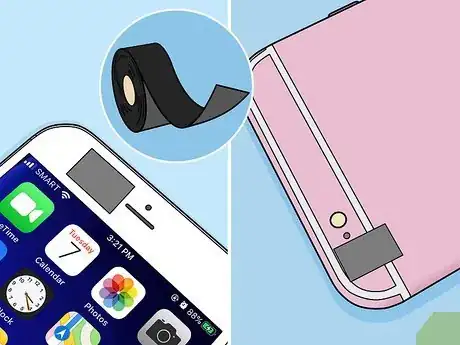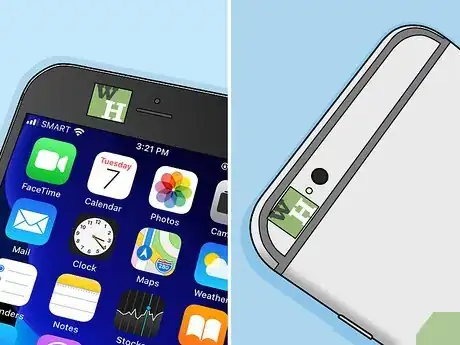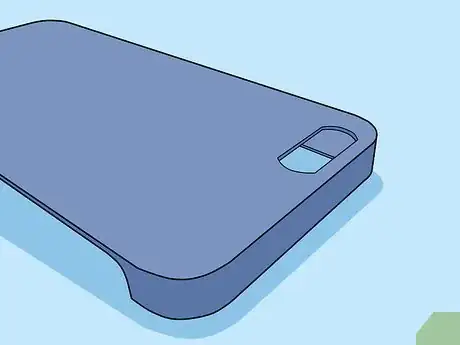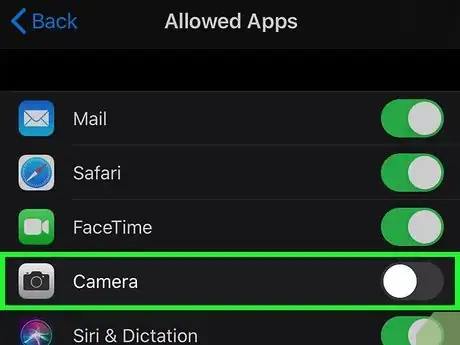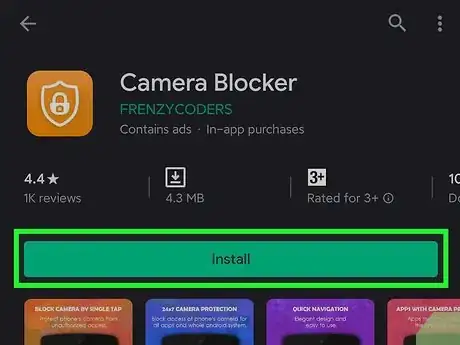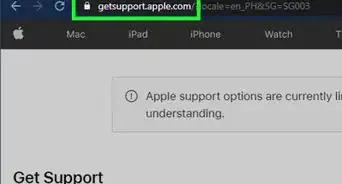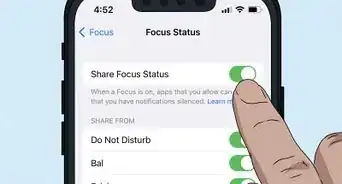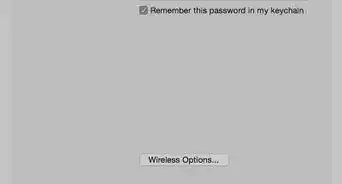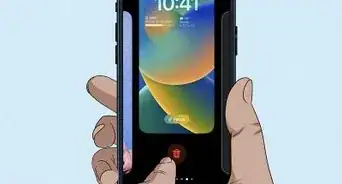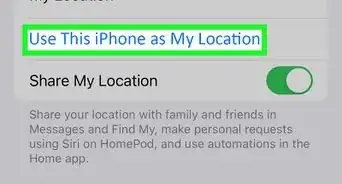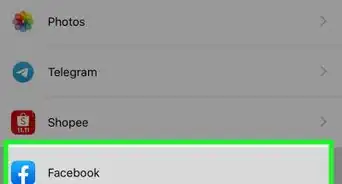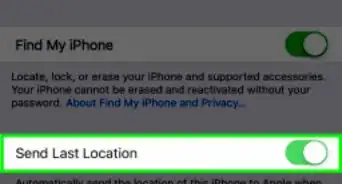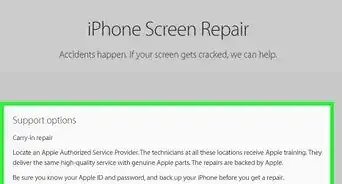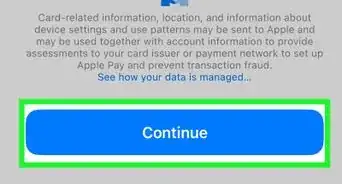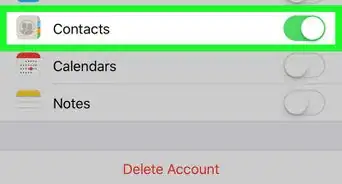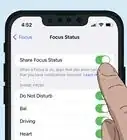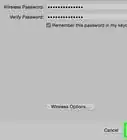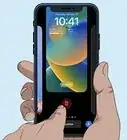This article was co-authored by wikiHow staff writer, Eric McClure. Eric McClure is an editing fellow at wikiHow where he has been editing, researching, and creating content since 2019. A former educator and poet, his work has appeared in Carcinogenic Poetry, Shot Glass Journal, Prairie Margins, and The Rusty Nail. His digital chapbook, The Internet, was also published in TL;DR Magazine. He was the winner of the Paul Carroll award for outstanding achievement in creative writing in 2014, and he was a featured reader at the Poetry Foundation’s Open Door Reading Series in 2015. Eric holds a BA in English from the University of Illinois at Chicago, and an MEd in secondary education from DePaul University.
There are 8 references cited in this article, which can be found at the bottom of the page.
This article has been viewed 49,241 times.
Learn more...
Don’t worry. You aren’t being paranoid if you’re thinking about covering the camera on your phone. In recent years, there have been dozens of news stories confirming the ability of hackers to break into your phone and access your camera when you aren’t using it. Luckily, there are plenty of easy ways to prevent cybercriminals from seeing you or accessing the camera. The easiest way to do this is to physically obscure your camera, but you can also disable or block the camera in your phone’s settings to turn it off. Ideally, you should use both of these methods concurrently if you’re really worried about privacy.
Steps
Obscuring the Camera
-
1Use a piece of electrical tape to cover the camera for a simple option. Black electrical tape is perfect for covering the camera on a cell phone. Peel off a small piece of electrical tape and trim it to size using scissors. Put one small piece of tape over the front camera and a slightly bigger piece of tape over the back camera. This is more than enough to hide your lens from a hacker trying to get into your camera.[1]
- The downside of electrical tape is that it will leave a sticky residue behind when you peel it off of the phone. It also isn’t as attractive as other solutions.
- The camera on the front is typically around 0.25 inches (0.64 cm) in diameter. The camera on the back is a little bigger—usually around 0.5–1 in (1.3–2.5 cm) in diameter depending on your phone. Cut pieces to size accordingly based on your specific phone’s camera.
- Standard translucent tape may cloud the image from your camera, but it won’t completely hide it.
- You can use duct tape if you prefer, but the adhesive on duct tape is much stronger than electrical tape. You’ll have a bunch of gunk left on your phone if you ever decide to take it off.
-
2Choose a sticker to add a fun design while covering the camera. A sticker will perform the same function as a piece of electrical tape without looking ugly or out of place. You can purchase a set of small stickers online or pick up a set of stickers from a craft store. You can also find small stickers to cover your phone in a children’s sticker book. Find 2 stickers that you like and put one on the front camera and one on the back.[2]
- Flowers, logos, symbols, and smiley faces will all give your phone a little personality while covering the camera.
- So long as the sticker is big enough to cover the lens, the sticker will work. For the front camera, basically any sticker can cover it. For the camera on the back, you’ll need a sticker that is at least 1 by 1 inch (2.5 by 2.5 cm), although it may need to be bigger depending on your specific phone.
- Stickers will hold just as well as electrical tape, but they will also leave a residue behind if you ever take them off.
Advertisement -
3Get an adhesive camera cover for a more seamless option. Purchase some special camera covers online that match the size of your camera. These are basically thin adhesive strips that can be stuck on and peeled off of a phone camera without leaving any residue behind. Once you get your camera cover, peel the adhesive off of the back and stick it over your camera.[3]
- These camera covers usually come in sheets with different sizes of covers. Use whichever sizes will cover your lenses entirely.
- You can get these camera covers in a solid color or with a small design on them.
-
4Buy a slide cover that obscures the camera to hide it when you want. Camera slide covers are small tabs with one open side and a lid that slides over the opening. They’re designed for laptops, but they can work on phones as well. Get a slide cover online. To install it, simply stick the open side over your lens. Then, whenever you want to cover the lens, move the small slide over the opening.[4]
- Unfortunately, this is not an ideal solution for the camera on the back of the phone. Combine this solution with an additional method to cover both lenses.
-
5Use a case with a built-in slide cover to hide your camera when you want. Buy a protective case with a built-in slide cover online or at a phone accessory store. Insert your phone into your case and use the tab on the top or side of the case to hide your camera. These cases are a great option if you want a cleaner way to cover the camera.[5]
Tip: These cases are easy to find for iPhones. For Androids, these cases may be kind of difficult to find since the cameras are different on every case. For less popular Android models, there may not be slide cover cases for your phone.
Using Software Settings
-
1Remove camera permissions in your phone to restrict camera access. Go into your phone’s settings tab and select “Applications.” Then, find the tab where you give camera access to your applications. On many phones, this is the “Permissions” or “Access” tab. Set every application to “Off” under the camera setting to ensure that third party apps cannot access your phone.[6]
- On iPhones, select “Privacy” instead of “Applications” after going into the settings. Then hit “Camera” to access the permissions.
- This will only prevent applications on your phone from accessing your camera without your permission. Hackers may still be able to break in, but most hackers use malicious applications to get into the camera to begin with, so this is a good way to limit access.[7]
-
2Disable the camera completely in your iPhone if you have one. To do this, open “Settings” and select “General.” Then, choose “Restrictions” and enter your password. Under “Allow,” turn the camera to the “Off” position by clicking it. Close out of your settings and restart the phone. Your cameras will now be completely shut off.[8]
Tip: You may be able to disable the camera in Android phones, but the process differs radically from brand to brand. Some phones do not allow you to disable the camera at all. Consult your specific instruction manual or call your carrier’s customer support to find model-specific instructions on shutting your camera off.
-
3Download an app that blocks your camera from being accessed. There are a variety of apps for Android and iOS that turn your camera off. Download one of these apps and keep it running in the background while your phone is on to protect your phone’s camera from being used. Keep in mind, while most of these third-party apps are free, they may not provide total protection from adept hackers.[9]
- The most popular apps that cut off camera functionality include Camaraless, Camera Blocker, NoCam, and Camera Block Free.
References
- ↑ https://mashable.com/article/should-you-cover-phone-selfie-camera/
- ↑ https://mashable.com/article/should-you-cover-phone-selfie-camera/
- ↑ https://youtu.be/S72G9C-IeZU?t=131
- ↑ https://youtu.be/S72G9C-IeZU?t=247
- ↑ https://www.inverse.com/article/14389-iphone-camera-privacy
- ↑ http://osxdaily.com/2019/07/24/disable-camera-access-apps-iphone-ipad/
- ↑ https://www.theguardian.com/technology/2017/mar/26/12-ways-to-hack-proof-your-smartphone-privacy-data-thieves
- ↑ http://osxdaily.com/2013/03/18/disable-iphone-camera-and-lock-screen-camera/
- ↑ https://appsandapplications.com/camera-guard-blocker-protects-your-privacy/
